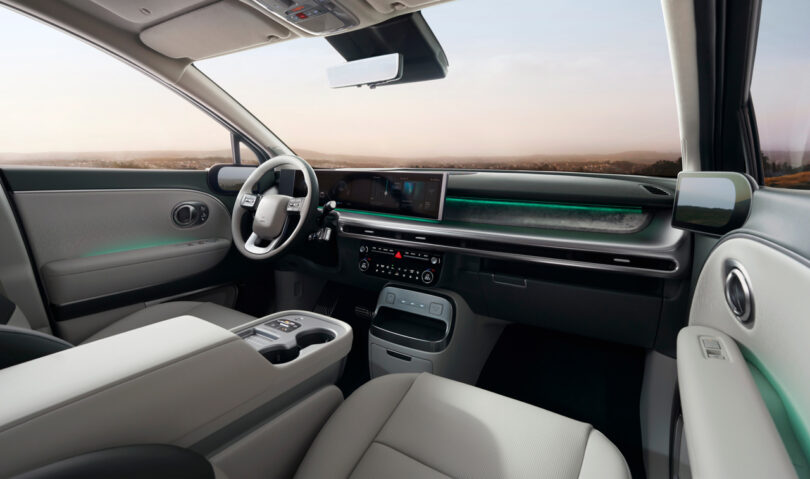Hyundai is making a bold entry into the electric SUV market with the new Hyundai Ioniq 9, blending style, innovation, and utility. Drawing design inspiration from its Ioniq siblings, particularly the retro-modern Ioniq 5, the Ioniq 9 upsizes the concept while introducing its own identity, earning its reputation as a “living room on wheels.”

That’s right, if you loved the retro-modern design of the Ioniq 5 but wanted something larger, then the Ioniq 9 will likely have everything you need. It offers the now-famous pixel-light design motif throughout, including in the headlights and tail lights. That design element is built onto a stylish body with a curved roofline.
But perhaps much more interesting than the exterior is the interior design. When Hyundai first showed off the concept version of the Ioniq 9, then known as Concept Seven, it was shown as essentially a social sitting room on wheels. At the time, it was pretty clear that many of these design aspects wouldn’t make it to the final production version. Indeed, the interior of the production Ioniq 9 is quite different from Concept Seven. That said, some elements of that design have made it through into the final model.

As you might expect from such a large vehicle, the Ioniq 9 offers three rows of seats. It’s available in a seven-seater configuration with two bench seats for the second and third row, or a six-seater configuration, which has a bench seat in the third row and captain’s chairs for the second row. In that six-seater arrangement, those captain’s chairs can swivel around completely, facing the rear seats for a more social, open setting. The seats can only swivel when the vehicle is stationary, and it’s currently unclear if you can set them to face the rear, then start driving, or if they have to be facing forward when you take off. Regardless, it makes for a pretty cozy social environment when you’re not on the road.

The captain’s chairs serve other purposes too. They’ll make it a lot easier to strap a kid in when you can swivel the chair to face outward.

Between the driver and front-row passenger seat, there’s a storage compartment that Hyundai is calling the “Universal Island.” It can actually slide back to be usable as a kind of table for the second-row passengers. That can be pretty handy, for example, when the car might be charging.

There are three USB-C ports at the front, as well as a wireless charging pad for your phone, with more USB-C ports dotted throughout the interior for the passengers to charge their devices.
Like other Ioniq vehicles, the Ioniq 9 has a dual display at the front and supports CarPlay and Android Auto through a wireless connection. Thankfully, Hyundai has avoided packing all of the controls into the screen, instead using physical buttons and knobs to control temperature, fan speed, and so on. I’m glad that companies are starting to realize that packing every single control into the infotainment display doesn’t make for a great experience, not to mention the fact that it’s actually dangerous if it’s difficult to find those settings and you have to take your eyes off the road to do so.

The Hyundai Ioniq 9 may be nearing production, but it’s not available for purchase just yet, and we don’t yet know exactly how much it’ll cost. Hyundai says that it’ll be available in the United States and Korea at the beginning of 2025, so we won’t have to wait too long before we can see it for ourselves. In the meantime, you can find out more about the Hyundai Ioniq 9 at hyundaiusa.com.

